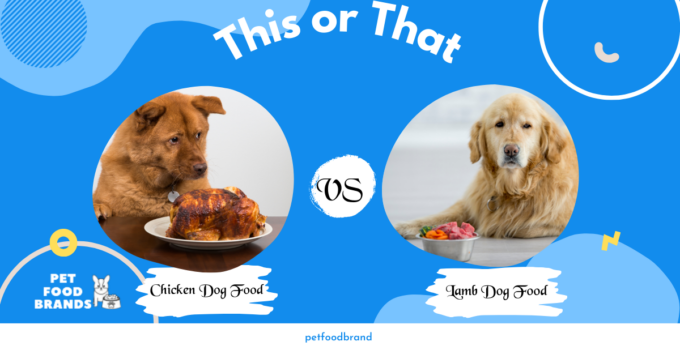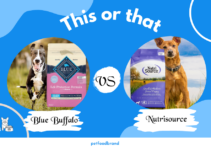Just as people tend to have different parenting styles or approaches to taking care of their kids, they could also have various ways of caring for their dogs! However, one topic where all pet parents are unanimous in their opinion is giving their little four-pawed friend a diet that is rich in meat.
But an important question pops up here. Which meat is better for your dog – chicken or lamb?
If, like many other pet parents, you’re also confused between lamb and chicken food for your pup and wonder which one is the healthiest, you’re in the right place. I did a detailed analysis of the two to help find the right one for my dog, and I believe you can benefit from it too.
So, keep reading to learn about chicken vs. lamb food, its pros, and cons, and make the best choice for your pup!
All About Chicken Dog Food
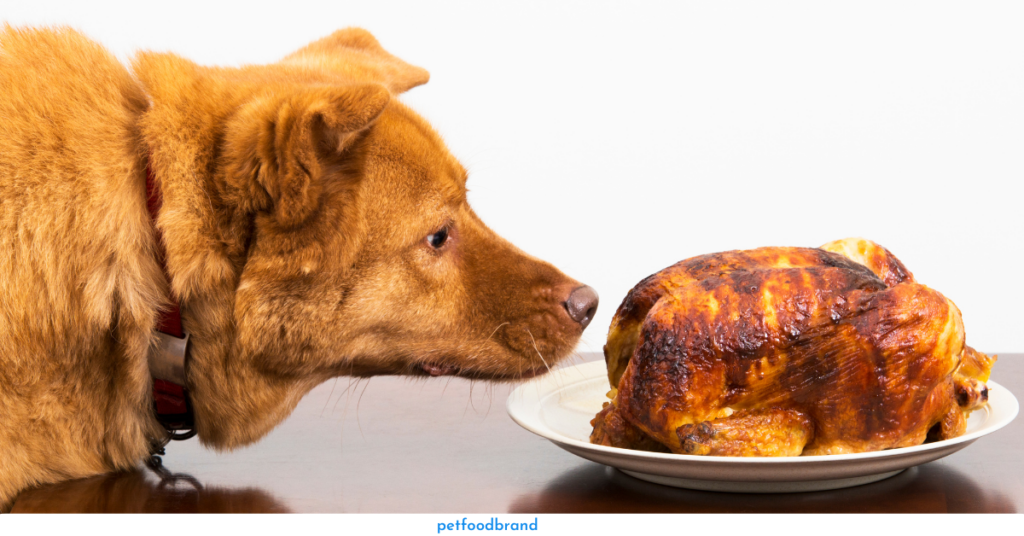
The most common source of protein you’d find in dog food is chicken, which can also include chicken meals and by-products. Unlike lamb food, it’s an easily available and affordable meat variant that has been a part of the dog food industry for quite some time.
Chicken is a lean meat with abundant protein that can keep your pup healthy and happy. All of these factors contribute to making chicken a great protein source in a dog’s diet; unless your pup is allergic to it.
But that’s not the end of it. Chicken is also an ideal meat choice for overweight dogs. Chicken proteins may help your pup maintain or even lose weight due to the low fat and calorie content.
A chicken diet for dogs also contains glucosamine, an essential component of cartilage tissue that can keep pups active and healthy.
All About Lamb Dog Food
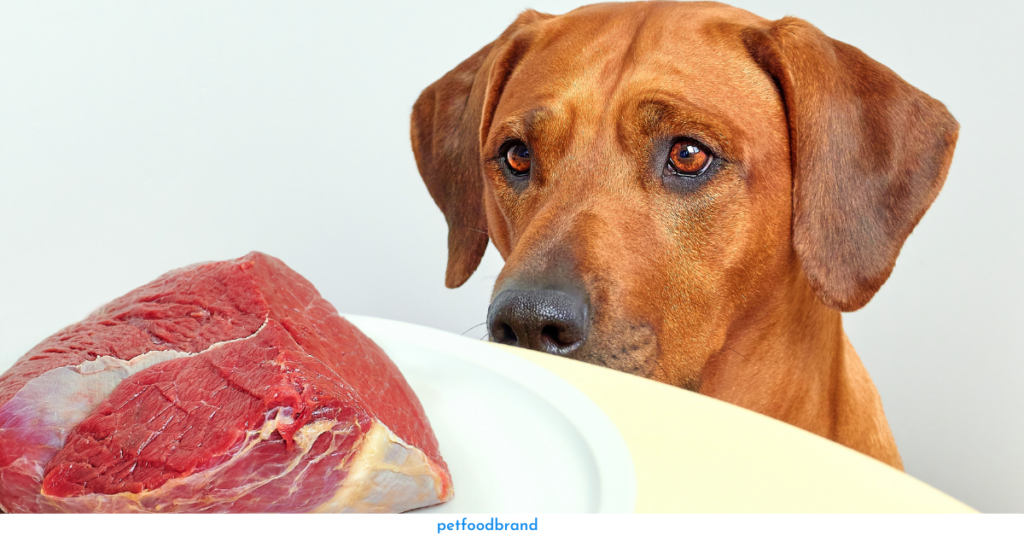
Whether you’re a new pet parent or have been one for years, you might have come across lamb dog food. It’s getting pretty popular lately. It’s a fantastic choice if you want to jazz things up for your pup and deviate from the usual beef or chicken options.
Lamb is a winner, especially if your dog has allergies or food sensitivities. And, if you’ve got a picky eater on your hands, lamb dog food might just be the answer.
So, what’s the deal with lamb? Well, this red meat is power-packed good stuff for your furry friend. It’s got almost every essential – fats, protein, and iron.
But that’s not all! There’s linoleic acid too, which offers much-needed support to your pup’s muscles. It also contains vitamin B, which can keep your dog’s brain and nervous system healthy.
Wait, there’s more! Lamb also comes with amino acids, zinc, and selenium. This combo boosts eye health, joints, and that precious coat of your pooch.
The best way to feed a picky dog is by focusing more on the aroma and taste of the food and not the ingredients. Lamb can be a superb choice as it’s abundant in nutrients and delicious. So it’s a win-win!
The good flavor and rich smell of lamb ensures it’s the ideal meal for any dog. Moreover, wet lamb food can be more appealing to your dog than the dry variant as it’s easier to gobble and swallow, which reduces any choking risks.
Chicken Vs. Lamb Dog Food: What’s the Final Verdict?
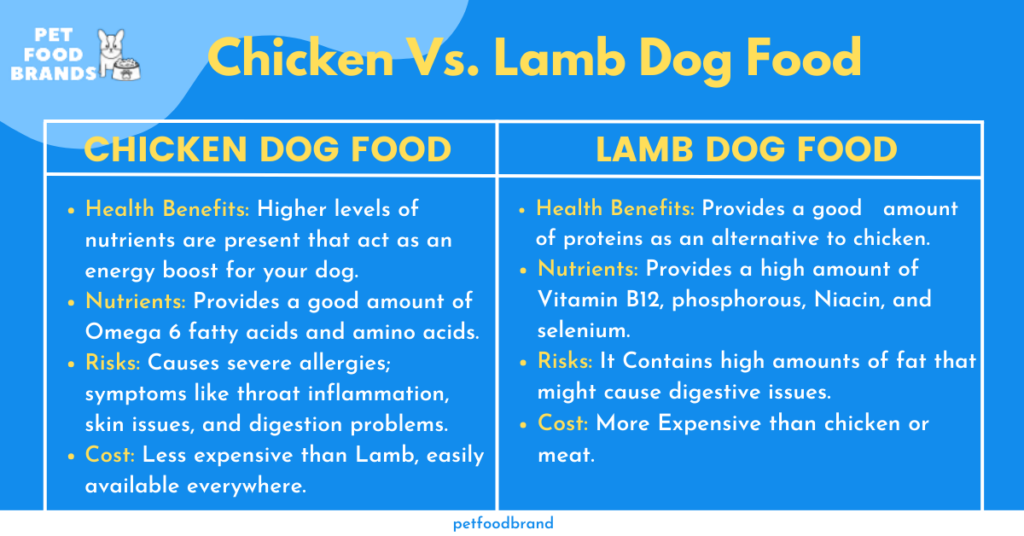
In the battle between chicken and lamb, the right meat for your dog is the one that suits them the best! You must consider dietary requirements, age, energy levels, allergies, and preferences to decide.
Here’s a detailed comparison of the two based on a few crucial factors:
1. Nutrition
Chicken and Lamb have different nutrients in them. We will discuss the differences between the two as far as nutrients are concerned and how they will benefit your pup.
Chicken
Did you know that chicken has a good amount of Omega 6 fatty acids that your dog needs? Well, I didn’t either, until recently.
The Omega 6 fatty acids in a chicken-rich diet will help enhance your pup’s skin quality and increase the permeability to reduce the chances of infections or itchiness. This fatty acid will also ensure the coat is always shiny and appealing.
Another benefit of protein-rich chicken food is that it provides a dog with all the essential amino acids. It can offer 10 out of the total 20 amino acids from chicken.
Only animal proteins can provide essential amino acids to dogs, and chicken is known for having the highest content compared to other meat sources.
Lamb
Not many pet parents realize it, but dogs need vitamin B and B-complex to stay healthy. And luckily, lamb can offer a high amount of vitamin B, including B12, which can improve brain function and blood formation.
Besides that, your dog also gets zinc, iron, phosphorus, Niacin, and Selenium from lamb, which can keep them healthy.
Lamb meat can also offer your pup a lot of protein to build, heal, and even maintain muscles. The protein also helps produce hormones and antibodies and supports the immune system of canines. Lamb also offers a good amount of essential minerals.
2. Health Benefits

Chicken and Lamb can differ in the health benefits that they provide. Let’s see their differences in more detail in the following paragraph.
Chicken
The primary benefit of a meal rich in chicken is that it can offer your pup a much-needed energy boost.
If you have a super active dog that is always bursting with energy, a great way of restoring their energy level is by giving them chicken. You don’t have to worry about your pup consuming excess protein because they will use it to build and maintain their muscle tissues and health.
Lastly, dog food endowed with chicken can also help with joint or arthritis issues your dog might face. The nutrients present in chicken food boost the healing process.
Wondering how? Well, chicken feet have higher levels of chondroitin and glucosamine. Both these supplements improve the joint health of canines with arthritis and other bone-related issues.
Lamb
If your dog has food allergies, especially to chicken, it can be tricky to find a protein alternative. Here, lamb can come to your and your pup’s rescue.
It has a good amount of protein and is a great chicken alternative. You can still ensure your furry friend gets the required amount of protein and other nutrients through their daily diet by adding lamb.
3. Risks
Chicken
Your dog might love eating chicken, but is it safe for them? Not always. Due to sensitivity or even allergies, dogs are prone to digestive issues arising from eating chicken.
These allergies occur if a dog has an abnormally high defensive reaction to protein. You might notice these allergies appearing when you introduce a particular protein to your dog or offer it after a long time.
You must look for the following symptoms to identify whether your pup is allergic to chicken in dog food. While allergies tend to be more severe in some dogs, causing throat inflammation, other common symptoms are:
- Runny nose
- Skin rash
- Diarrhea
- Restlessness
- Shock
- Watery eyes
- Facial swelling
- Salivation
- Incoordination
- Watery eyes
- Abdominal pain
- Sneezing
Another major concern around chicken in dog food is that it is associated with a very high risk of salmonella contamination. If the pathogens present in chicken reach your dog’s digestive tract, it can lead to a severe infection.
You might notice symptoms of this infection, like a sudden loss of appetite and even diarrhea. Therefore, you must properly cook the chicken before giving it to your pup.
And if you notice any or all of these symptoms in your pup, it’s best to seek a vet’s advice and get the required treatment.
Lamb
Unlike chicken, lamb contains high amounts of fat. If the manufacturers don’t remove it from the lamb meat, the dog food can have a very high-fat content, making it unsuitable for canines that are inactive.
4. Cost

Lamb can be more expensive than chicken! Please scroll down to know why it costs more.
Chicken
Chicken is a relatively easily available meat, and dogs don’t require much upkeep, which makes them quite affordable. Due to this, many dog food manufacturers prefer adding chicken as the primary source of animal protein.
Lamb
Lamb is more expensive than other animal-based protein sources like chicken or beef. It is priced high as most lambs are farm-reared and not from factories. So maintenance costs are high as they need staff to care for them. Transportation costs can also be quite steep.
In the end, as daunting as it may sound, you can only find the answer to what’s better for your pup with trial and error, as there is no direct answer.
Both types of meat are rich in protein and easily digestible, so you can pick either in this aspect.
However, when deciding which one’s better – chicken or lamb dog food, the final verdict rests upon what your pooch needs and the drawbacks of each meat variant.
Lamb is more suited for a canine that has food allergies or sensitivities triggered by chicken. In contrast, chicken is ideal for an old dog or ones that are not too active.
Frequently Asked Questions
Do Dogs Prefer Lamb To Chicken?
Yes, dogs prefer lamb to chicken meat because it has a better aroma and taste.
Which Meat Is Best In Dog Food?
Many pet parents believe that turkey is the best meat for dogs as it contains low calories, fat, and higher protein.
Can Dogs Eat Chicken Every Day?
Yes, dogs can eat chicken daily as it provides a good amount of protein. However, it would help if you did not rely on chicken alone, as your dog needs a balanced meal with other nutrients.
Final Thoughts
Dog parents and experts alike believe that canines are omnivorous and need high-grade meat in their diet. Therefore, your top priority is to ensure your pup gets the required amount of meat from the right source.
When it comes to comparing lamb vs. chicken and which one is better, it all boils down to your pup’s dietary needs and lifestyle.
If you think your pup is allergic to chicken, it’s best to opt for lamb, even though it might be expensive. You can go with chicken dog food if your dog is old or lazy.
Remember to ask your vet before introducing anything in your furry friend’s bowl to avoid causing health issues!

Ankita is a passionate pet lover and head of content at Pet Food Brands. With her extensive knowledge and research, she provides pet owners with top-quality information on dog food and nutrition. Her dedication to improving the lives of dogs makes her a leading voice in the industry.

